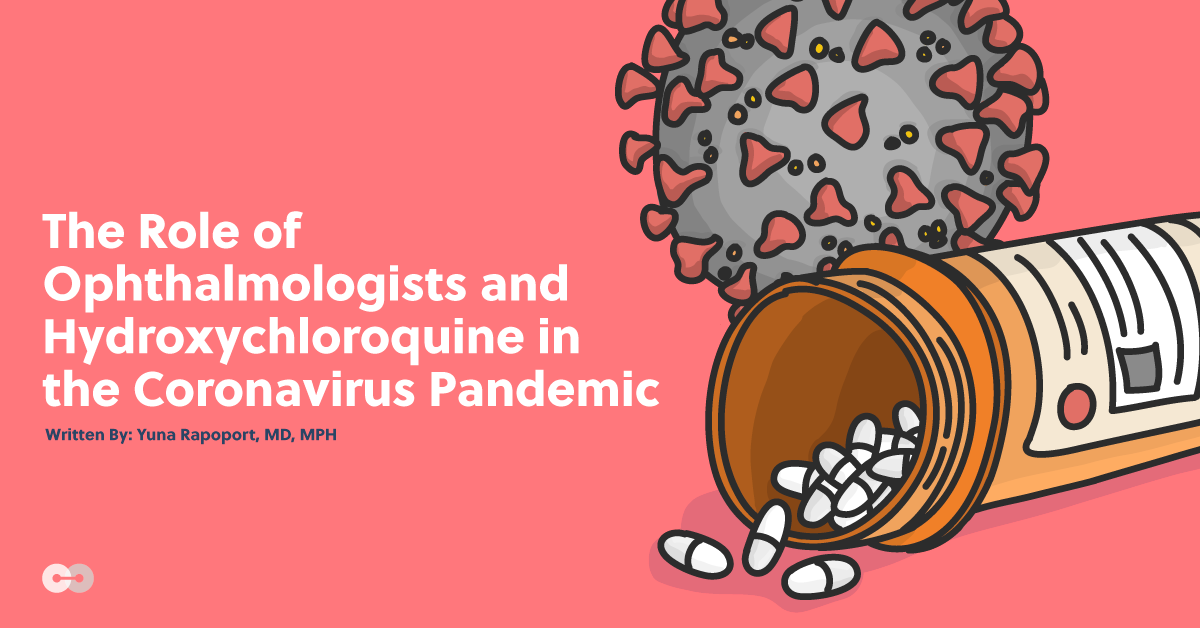Chloroquine and hydroxychloroquine (brand name Plaquenil) were originally anti-malarial
medications and are now routinely used for rheumatologic and dermatologic diseases. They are classified on WHO’s List of Essential Medicines. The most common diseases these medications are used to treat include rheumatoid arthritis, as well as chronic discoid lupus erythematosus and systemic lupus erythematosus in adults.
With the onset of Coronavirus and COVID-19, new research suggests that hydroxychloroquine can be helpful in combination with other medications in treating COVID-19 patients. In a
press announcement on March 19, 2020, Trump announced that the FDA was fast-tracking the use of hydroxychloroquine and other anti-viral drugs for COVID-19. Doctors have been prescribing hydroxychloroquine prophylactically for weeks, but this announcement led to a massive surge of prescriptions, resulting in a nationwide shortage and a backorder from the manufacturer.
It is important to remember some of the side effects of hydroxychloroquine and chloroquine during this time. The systemic side effects of the medication include cardiomyopathy and QT interval prolongation, gastrointestinal upset, headache, and skin rash. As ophthalmologists and optometrists, we are well aware of the potential risk hydroxychloroquine poses to the eye.
What are typical ocular complications of Plaquenil (hydroxychloroquine)?
Hydroxychloroquine is typically well tolerated, but is known to adversely affect the cornea, ciliary body, and retina. Chloroquine, an older medication, is known to also cause
cataracts. Typical ocular side effects in the retina include a bull’s eye retinopathy in the macula. Typical ocular side effects in the
cornea include deposition of the drug within the epithelium. The ciliary body can very rarely be disturbed via dysfunction of accommodation. Any visual disturbances that result occur because of the
macular toxicity.
Because patients are typically asymptomatic with early toxicity, it is important to screen to be able to pick up findings early. Patients with advanced toxicity may have symptoms including paracentral scotomas or color vision changes. Once toxicity develops, it is permanent, which is why screening and early detection are crucial.
How do we screen for toxicity?
Because of these ocular side effects, a complete ophthalmologic examination is recommended before starting the medication or within the first year of starting. At my practice
Manhattan Eye, we follow
American Academy of Ophthalmology guidelines, and include the following for a screening exam: dilated fundus examination, a Humphrey visual field 10-2 (24-2 or 30-2 for patients of Asian descent) and a spectral-domain optical coherence tomography (SD-OCT). After 5 years of treatment (earlier for patients at higher risk), yearly exams are recommended.
Other testing to be considered include multifocal electroretinography (mfERG) and
fundus autofluorescence (FAF). Exams that were previously recommended and no longer are include color testing, Amsler grid, time-domain OCT, fluorescein angiography, and full-field ERG.
In early toxicity, a visual field will reveal a paracentral scotoma. A “flying saucer” sign is seen on OCT, which represents the perifoveal loss of the ellipsoid zone on both sides of the fovea. A fundus autofluorescence can show photoreceptor damage earlier than a SC-OCT will show thinning. Later on, the area within the RPE that is atrophic will appear as hypo-autofluorescence on the fundus autofluorescence.
Treatment involves cessation of the medication at the first stop of retinal toxicity. There is no medical or surgical therapy to treat this macular toxicity, so the best paradigm is primary prevention.
What is the Dose-related Response?
The risk for hydroxychloroquine retinopathy is lower with <5.0mg/kg real weight/ day for hydroxychloroquine and <2.3mg/kh real weight/ day for chloroquine. Other risk factors include old age, renal disease and simultaneous use of other drugs such as Tamoxifen. Concurrent macular disease may make it difficult to appropriately screen patients with true hydroxychloroquine toxicity.
At the recommended doses, the risk of retinal toxicity is less than 1% up to 5 years, under 2% up to 10 years, and then rises to about 20% after 20 years. Patients should be screened annually after 5 years, and sooner if they have any risk factors.
It is important to remember that while ocular toxicity typically only develops at least after 5 years, a QT prolongation on an EKG can occur relatively quickly, resulting in ventricular arrhythmias and torsades de pointes. Hydroxychloroquine should not be administered with other medications that prolong the QT interval. Other serious systemic side effects include cardiomyopathy and hypoglycemia.
Will ophthalmologists and optometrists see a surge in routine visits for Plaquenil screenings?
While the sheer number of patients taking hydroxychloroquine would increase, since the ocular toxicity results after a dose-accumulated affect, it is unlikely we will see an increase in patients coming in for routine evaluations. The dose used for COVID-19 treatment in the first
study in Marseilles, France was 600mg PO QD, and the study found that 100% of the 20 patients studied who received a combination of HCQ and Azithromycin had negative respiratory viral tests within 6 days of treatment. Thirty-six patients were enrolled in the trial, including 20 treated patients and 16 infected control patients.
What is our role as ophthalmologists in these instances during the COVID-19 outbreak?
Given the known side effects, should the drug become utilized in Coronavirus treatment, we may see an increase in patient inquiry as to whether they need to have a baseline ophthalmologic exam. During this time, it is our role to encourage patients to stay home for non-urgent ocular issues. This includes baseline hydroxychloroquine examinations.
CovalentCareers is committed to supporting optometrists and optometry students during the Coronavirus pandemic. For more optometry-specific resources and information, visit our Optometry COVID-19 Resource Center.
